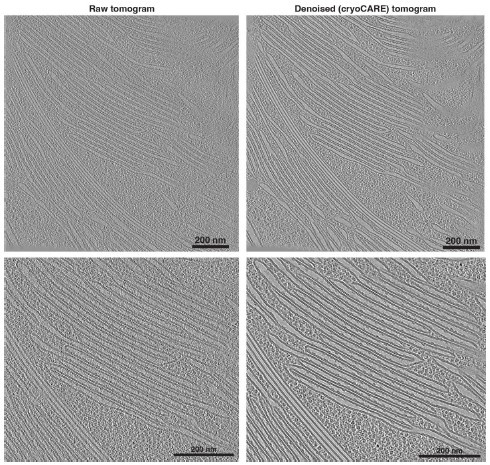Peer review process
Revised: This Reviewed Preprint has been revised by the authors in response to the previous round of peer review; the eLife assessment and the public reviews have been updated where necessary by the editors and peer reviewers.
Read more about eLife’s peer review process.Editors
- Reviewing EditorDavid KramerMichigan State University, East Lansing, United States of America
- Senior EditorFelix CampeloUniversitat Pompeu Fabra, Barcelona, Spain
Reviewer #1 (Public review):
Summary:
In this study, the authors utilized in situ cryo-electron tomography (cryo-ET) to uncover the native thylakoid architecture of spinach chloroplasts and mapped the molecular organization of these thylakoids with single-molecule resolution. The obtained images show the detailed ultrastructural features of grana membranes and highlight interactions between thylakoids and plastoglobules. Interestingly, despite the distinct three-dimensional architecture of vascular plant thylakoids, their molecular organization closely resembles that of green algae. The pronounced lateral segregation of PSII and PSI was observed at the interface between appressed and non-appressed thylakoid regions, without evidence of a specialized grana margin zone where these complexes might intermix. Furthermore, unlike isolated thylakoid membranes, photosystem II (PSII) did not form a semi-crystalline array and was distributed uniformly within the membrane plane and across stacked grana membranes in intact chloroplasts. Based on the above observations, the authors propose a simplified two-domain model for the molecular organization of thylakoid membranes, which can be applied to both green algae and vascular plants. This study suggests that the general understanding of the functional separation of thylakoid membranes in vascular plants requires reconsideration.
Strengths:
By employing and refining AI-driven computational tools for the automated segmentation of membranes and identification of membrane proteins, this study successfully quantifies the spatial organization of photosynthetic complexes both within individual thylakoid membranes and across neighboring stacked membranes.
Weaknesses:
This study's weakness is that it requires the use of chloroplasts isolated from leaves and the need to freeze them on a grid for observation. However, the authors have correctly identified the limitations of this approach and have made some innovations, such as rapid sample preparation. The reliability of the interpretation of the results in light of previous results can be evaluated as high.
Comments on revised version:
The author has responded appropriately to the peer review comments and revised the paper.
Reviewer #2 (Public review):
Summary:
For decades, the macromolecular organization of photosynthetic complexes within the thylakoids of higher plant chloroplasts has been a topic of significant debate. Using focused ion beam milling, cryo-electron tomography, and advanced AI-based image analysis, the authors compellingly demonstrate that the macromolecular organization in spinach thylakoids closely mirrors the patterns observed in their earlier research on Chlamydomonas reinhardtii. Their findings provide strong evidence challenging long-standing assumptions about the existence of a 'grana margin'-a region at the interface between grana and stroma lamellae domains that was thought to contain intermixed particles from both areas. Instead, the study establishes that this mixed zone is absent and reveals a distinct, well-defined boundary between the grana and stroma lamellae.
Strengths:
By situating high-resolution structural data within the broader cellular context, this work contributes valuable insights into the molecular mechanisms governing the spatial organization of photosynthetic complexes within thylakoid membranes.
Comments on revised version:
All reviewer comments have been fully addressed, and I have no further comments.




